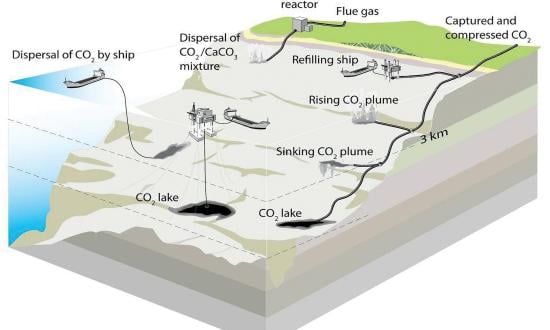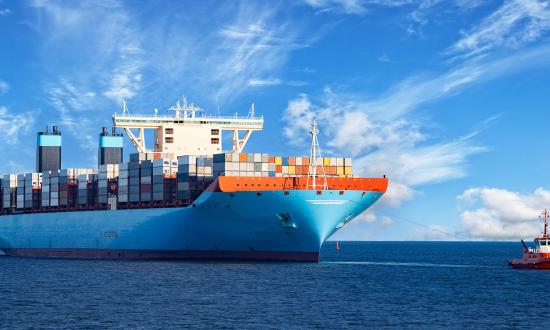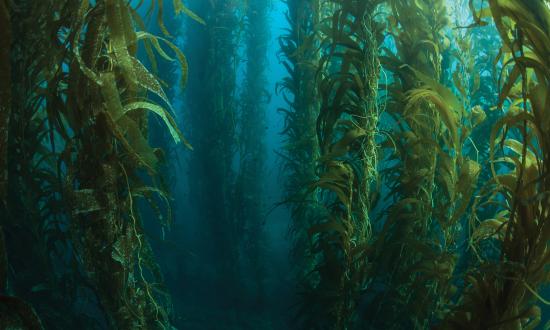The Central Arctic Ocean (CAO) is one of the most remote regions on Earth. Located at the top of the world, these international waters are a global commons, a high-seas region where no commercial fishing has been conducted. The CAO is bounded by the 200-nautical-mile exclusive economic zones of five Arctic Ocean coastal states (Canada, Denmark/Greenland, Norway, Russia, and the United States). The five national boundaries create a “donut hole” within the Arctic Ocean of approximately 1.08 million square miles, an area slightly larger than the Mediterranean Sea. A majority of the CAO’s area lies north of the continental shelves that surround the basin.
This remote ocean is changing, however, because of the profound retreat of Arctic sea ice in response to a warming planet. The changes to the CAO’s marine ecosystem and how future biological productivity might support new fish stocks are unknowns. Greater marine access to the region in all seasons and longer periods of summer, ice-free conditions portend the potential for a viable commercial fishery. Wild card issues such as increasing ocean acidification and the influx of southern fish stocks complicate the future of Arctic Ocean fisheries.
On 25 June 2021, an unusual and laudable treaty entered into force. Canada, China, Denmark (with Greenland and the Faroe Islands), Iceland, Japan, Norway, Russia, South Korea, the United States, and the European Union (EU) ratified the “Agreement to Prevent Unregulated High Seas Fisheries in the Central Arctic Ocean.” Negotiating for a decade and having signed the treaty on 3 October 2018, the parties have agreed to prohibit commercial fishing in the CAO for 16 years, with provisions to extend the treaty in five-year increments unless there is objection from any of the parties.
The agreement follows a precautionary approach that was advanced in the 1992 Rio Declaration on Environment and Development. The parties are taking measures and actions to prevent environmental degradation despite the lack of scientific certainty and full knowledge of the CAO’s physical and biological systems. Most important, they are taking strategic action in advance of unregulated fishing.
Recent Arctic treaties on search and rescue, oil pollution preparedness and response, and scientific cooperation have been negotiated and ratified solely by the eight Arctic nations. Significantly, this new agreement engages nations that have distant-water fishing fleets, notably China, Japan, Korea, and members of the EU, all of whom have national interests in future access to global fishing. It will be noteworthy if other fishing nations wish to join the agreement, or perhaps even test its standing and future enforcement. Furthermore, the agreement has no influence on the rights of marine navigation or potential commercial exploration of the seabed in the CAO; such principles and articles are embodied in the United Nations Convention on the Law of the Sea, the legal framework for the Arctic Ocean.
The critical challenge under the agreement is to gain a better understanding of the CAO’s marine ecosystem through enhanced environmental observations and future Arctic expeditions and the integration of traditional knowledge of the indigenous peoples who live in Arctic coastal communities. Near-term tasks for implementation of the agreement include establishing a scientific body to steer the research and development of a long-term program that will focus on future management and conservation measures. The participation and consultative roles of the Arctic indigenous peoples are guaranteed by the CAO treaty, comparable to the key consultation roles of the six indigenous Arctic peoples’ organizations within the Arctic Council.
Over the next 16 years, the CAO agreement should provide momentum for joint scientific operations and close cooperation among the Arctic and non-Arctic states who are parties. Seven of the nine states operate advanced, icebreaking research ships, and it would not be surprising to see multiship operations among the parties in all seasons. Opportunities for joint Russia-U.S. and joint China-U.S. oceanographic expeditions are highly plausible. With greater marine access and longer seasons of navigation, the tempo of marine exploration of the CAO will surely increase, resulting in greater knowledge of the least-understood ocean.







